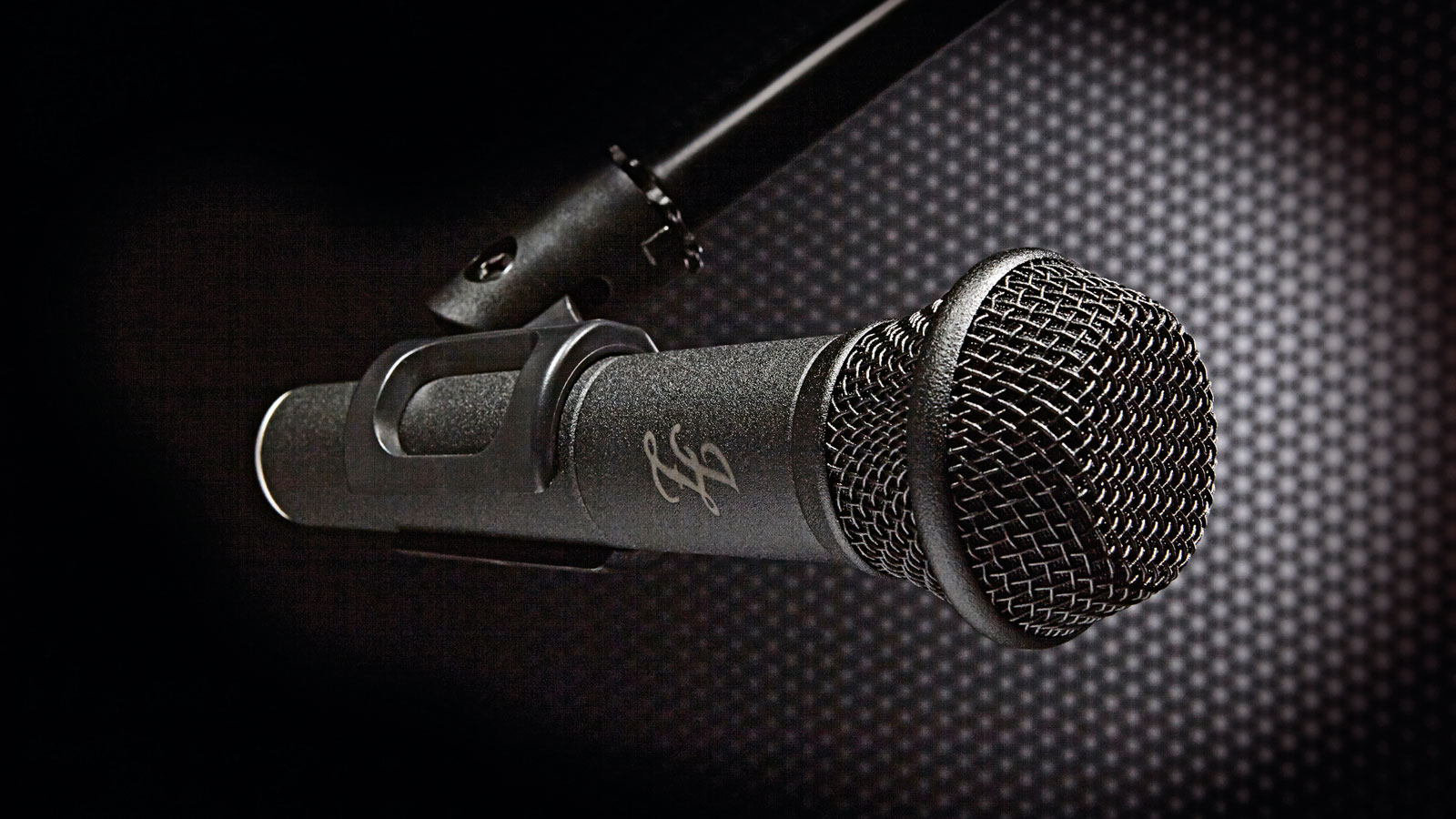MusicRadar Verdict
A cut above the standard stage fare with a vocal response that leaves little need for EQ and filtering.
Pros
- +
Sounds well balanced straight out of the preamp. Built to last on the road. Flat fronted grille - why aren't they all like this?
Cons
- -
Slightly weaker low-mid response might be an issue without EQ. Mild handling noise.
MusicRadar's got your back
JZ microphones blend radical aesthetics with innovative solutions. The HH1 is a good-looking mic, but as a hand-held dynamic mic there isn't much room for invention, at least with regard to shape.
In the hand the HH1 feels solid enough to withstand the rigours of the stage, whilst being just a touch lighter than an SM58. The textured matte black finish means it'll take quite some sweating to slip out of a singer's mitts.
The flat fronted grille helps keep the vocalist on-axis with the mic, reducing the tone and level variations that can mar a good vocal performance.
The HH1 is brighter and lighter than many standard dynamic vocal mics - the accompanying frequency response plot shows a strong 5kHz presence peak and a shelving down from 200Hz.
"We prefer mics that possess a distinct character and offer few choices, helping speed up decisions. The HH1 is one of those mics"
It sounds good from the get-go and needs little or no EQ. It possesses great clarity for vocals, which also translates to the acoustic guitar. The low-mid hump characteristic of many vocal dynamics is not evident with the HH1, keeping 'up close and personal' from becoming a miasma of honky mud. It made our nylon string acoustic sound great at unthinkably close quarters, which is a real bonus for separation too.
Though the presence peak is more pronounced than many dynamic mics, it is not unpleasant and can take some EQ without becoming harsh. The high-mid clarity does not spill over into hyped sibilance, and no matter how soft or aggressive the vocal the HH1 seems to translate with few artefacts.
The only tonal problem is that the low-mid response can make a strong baritone a bit light, though a touch of EQ can easily pull it forward. For higher register voices this is a great mic straight from the preamp.
Want all the hottest music and gear news, reviews, deals, features and more, direct to your inbox? Sign up here.
Considering the quality of the average PA mixing desk or outboard EQ this is an advantage, as it will incur less mauling and distortion on its journey to speakers and ears.
The HH1 has a strong output (about +3dB over an SM58) and makes for an appreciably low noise result even with a quiet vocal/source. The handling and stand noise rejection is okay, though not as good as SM57/58s. The shelved low-end means this noise occurs in the low-mid region and so isn't helped by applying a high-pass filter.
The off axis rejection is good, a must for live use, and yet the normal angle shifts one expects from a vocalist don't result in dramatic presence loss. Good mic technique can be used to make the vocal shine on the HH1 as opposed to battle a poor design.
Though the HH1 is aimed at vocal use we found it not only handled acoustic guitar well, but also sounded sweet on a clean guitar amp. We suspect it may have a similar effect on a snare or a hit-hat.
The JZ HH1 costs a chunk more than the standard issue SM58 and kin. We like that this mic seems to require much less adjustment post-preamp than many cardioid dynamics, though to a degree this reduces flexibility.
The HH1 is a tool for a specific job, which it does admirably, and it can easily be put to use for a range of non-vocal duties. We prefer mics (and a lot of other audio tools) that possess a distinct character and offer few choices, helping speed up decisions and allowing the important performance to get underway. The HH1 is one of those mics.
